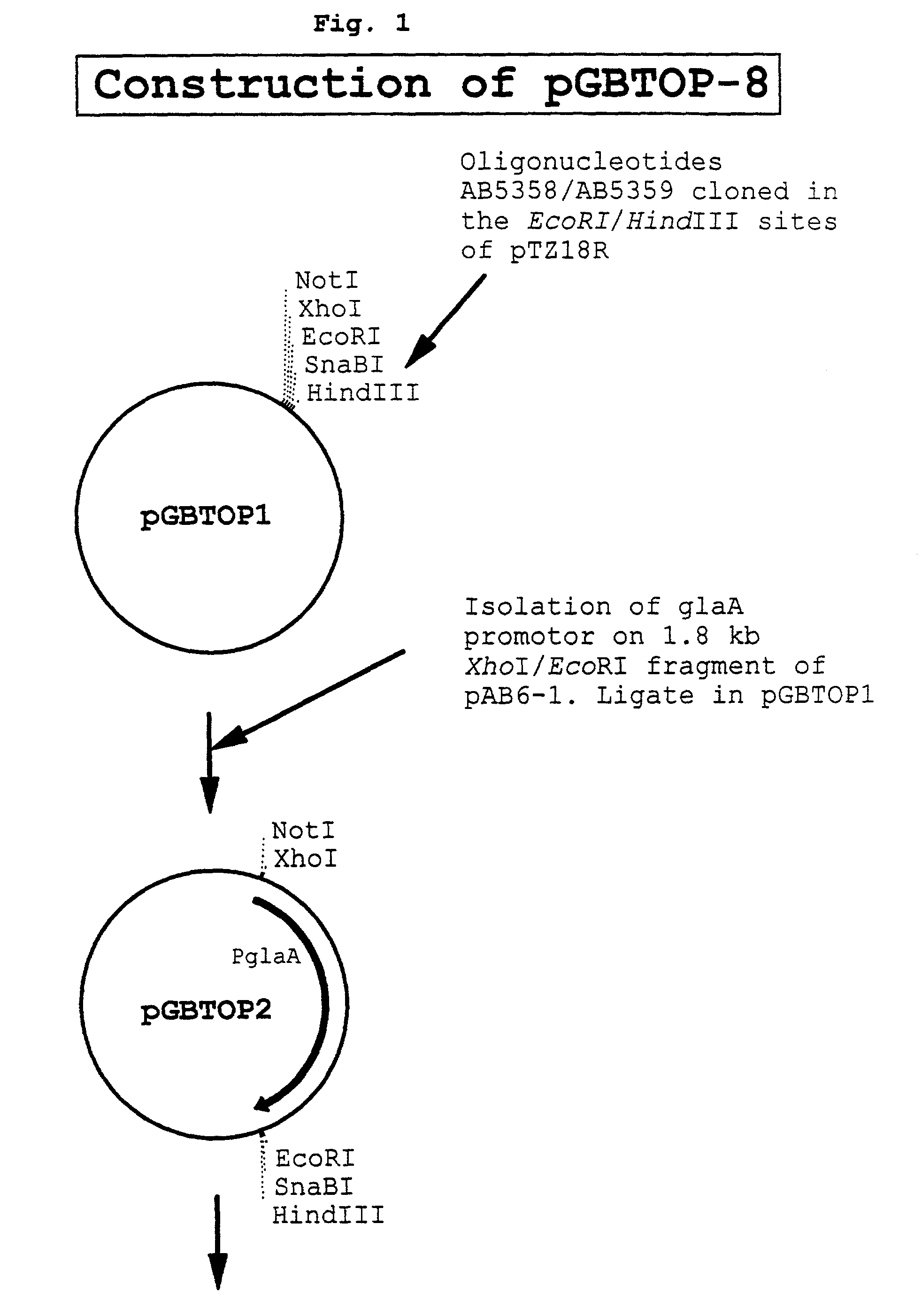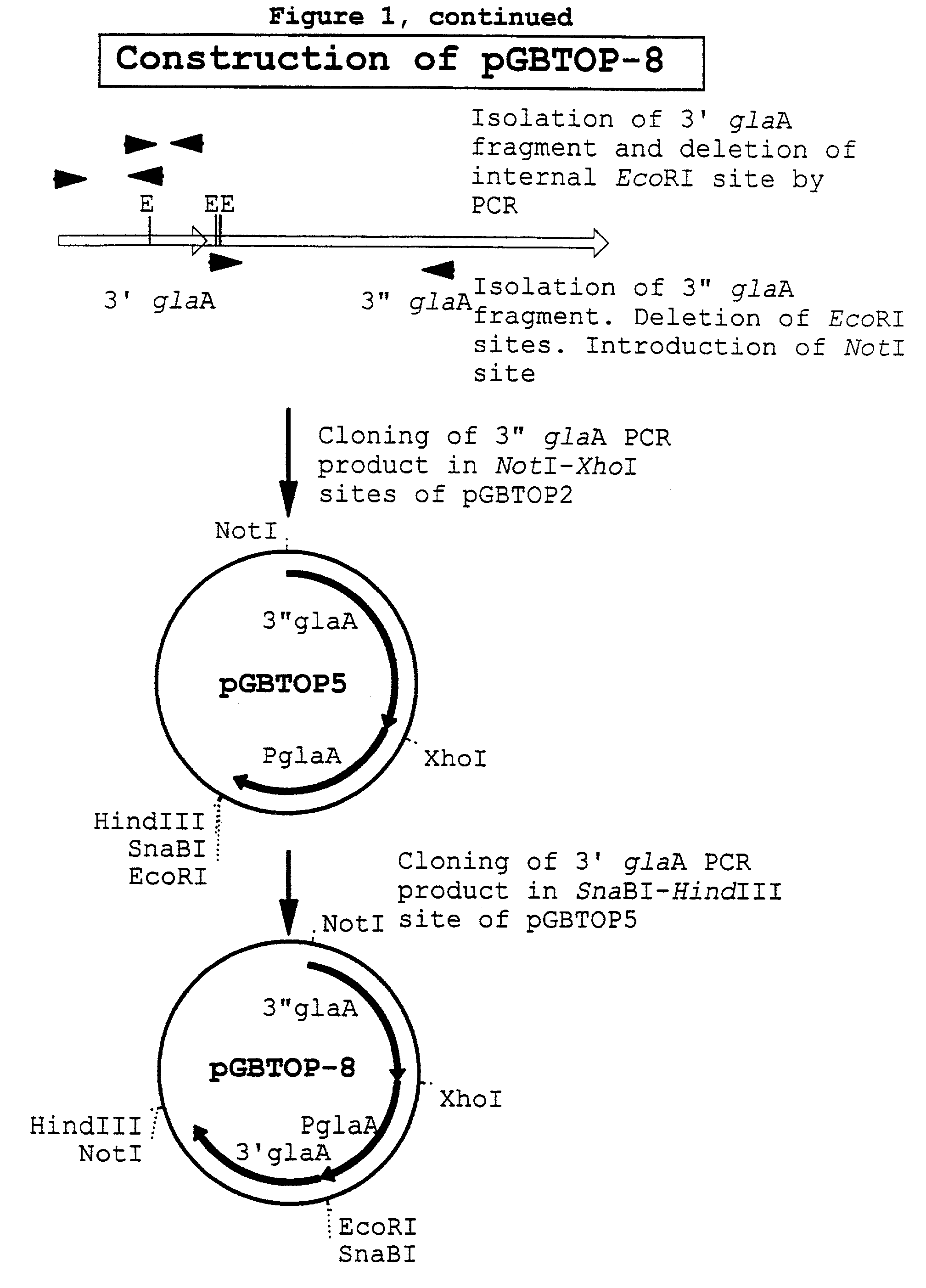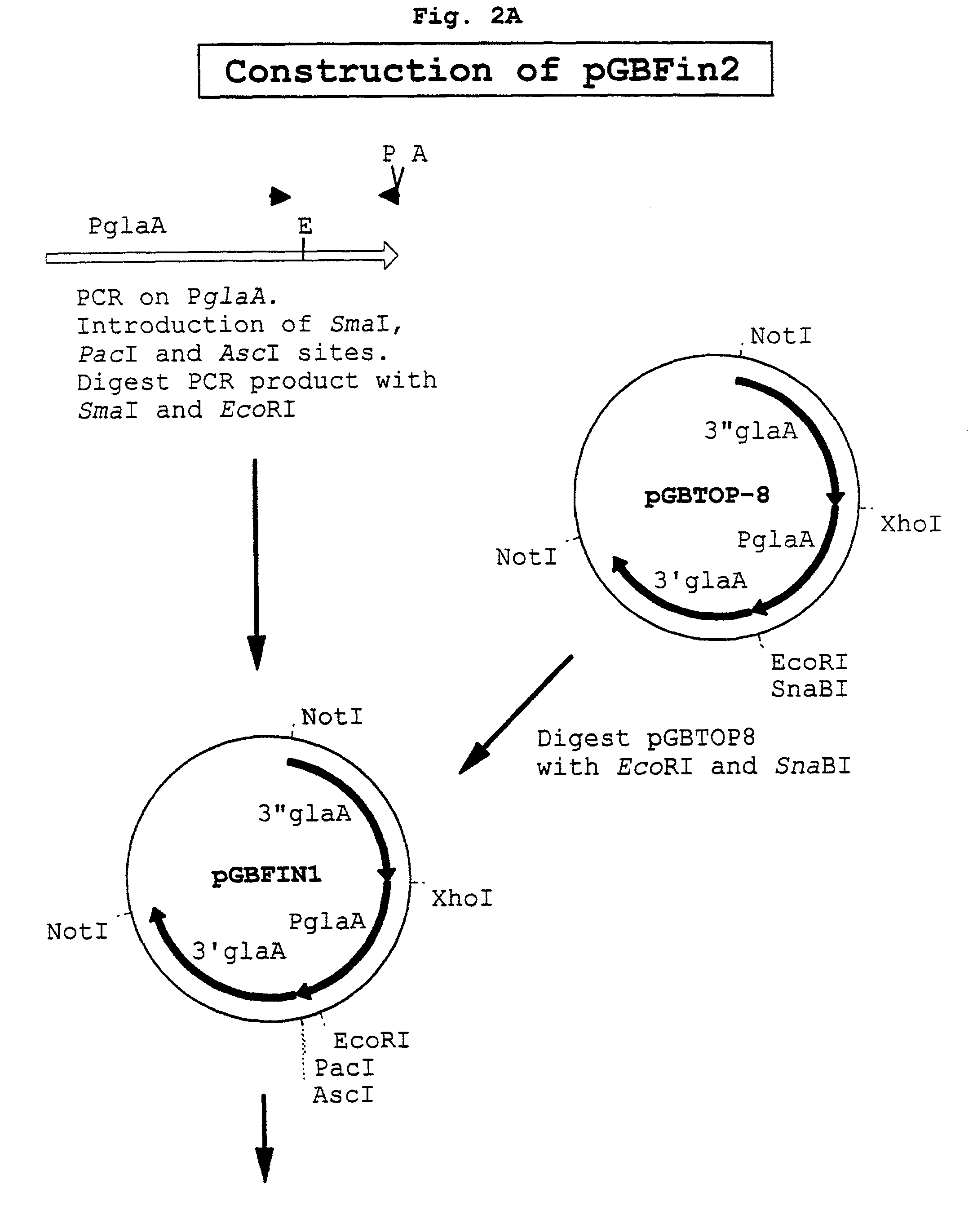Expression cloning in filamentous fungi
a filamentous fungus and expression cloning technology, applied in the field of identification of dna sequences encoding proteins of interest, can solve the problems of time-consuming process, bacteria are generally incapable of efficiently secreting secreted eukaryotic proteins, and prokaryotes are less suitable hosts for expression cloning
- Summary
- Abstract
- Description
- Claims
- Application Information
AI Technical Summary
Problems solved by technology
Method used
Image
Examples
example 1
1.1 Description and Construction of Expression Vector pGBFin2
1.1.a Rationale.
[0076]Expression screening in A. niger can be improved by a number of factors which when used in combination are likely to produce the most optimal result. An effective transformation system is preferred in order to obtain a sufficient number of fungal transformants. Care should be taken to keep the cDNAs in the library intact during the cloning procedure. Furthermore, screening will be most successful when expression levels of the gene product of the cDNA should be sufficiently high. Therefore, in the expression cloning constructs the functionalities used to drive expression of the cDNAs were derived from a gene which is highly expressed. In the integrative system the expression cassette is preferably directed to a locus which is highly expressed and which, even more preferably, has been amplified in the genome. In this example the glaA locus was chosen which is present in 3 copies in the genome of A. nige...
example 2
2.1 Construction and Analysis of a cDNA Library
2.1.a Rationale.
[0094]Expression libraries are constructed from a pool of mRNA which is expected to comprise the transcripts of interest. For this reason it is preferable, though usually not necessary, to isolate mRNA from mycelium isolated from a culture grown under inducing conditions. The isolated mRNA is analysed for the presence of the transcript of interest and for the quality of the mRNA. If the mRNA is intact and comprises the transcript of interest it can be used for cDNA synthesis. Cloning of the cDNA in the expression vector pGBFin2 requires the presence of a PacI site on the 5′- and of an AscI site on the 3′-end of the cDNA. Therefore the first strand priming oligonucleotide and the adapter sequences used were designed to meet these prerequisites. The adapter was designed in such a way that it is compatible with the PacI site in pGBFin2 whereas the PacI site is not restored after ligation of the cDNA in the vector. This make...
example 3
3.1 Construction and Analysis of an Expression Library in A. niger
3.1.a Rationale
[0096]A. niger DS2978 is transformed using the DNA isolated from the cDNA library in E. coli, as described in Example 2.2 above. Transformants are selected for the presence of the amdS selection marker by growth on acetamide as the sole N-source. Since both the amdS selection marker and the cDNA expression cassette are present on the integrating fragment growth on acetamide is indicative for the presence of a cDNA expression cassette. Conidiospores of amdS positive transformants are transferred to selective medium plates to avoid isolation of false positives and are subsequently transferred to microtiter plates comprising solidified PDA slants. This master-library is used to screen for production of enzymes of interest, e.g. xylanase. Since it would be useful if enzyme producing transformants could be used directly for larger scale enzyme production it is of interest to determine enzyme-production leve...
PUM
| Property | Measurement | Unit |
|---|---|---|
| volume | aaaaa | aaaaa |
| pH | aaaaa | aaaaa |
| volume | aaaaa | aaaaa |
Abstract
Description
Claims
Application Information
 Login to View More
Login to View More - R&D
- Intellectual Property
- Life Sciences
- Materials
- Tech Scout
- Unparalleled Data Quality
- Higher Quality Content
- 60% Fewer Hallucinations
Browse by: Latest US Patents, China's latest patents, Technical Efficacy Thesaurus, Application Domain, Technology Topic, Popular Technical Reports.
© 2025 PatSnap. All rights reserved.Legal|Privacy policy|Modern Slavery Act Transparency Statement|Sitemap|About US| Contact US: help@patsnap.com



